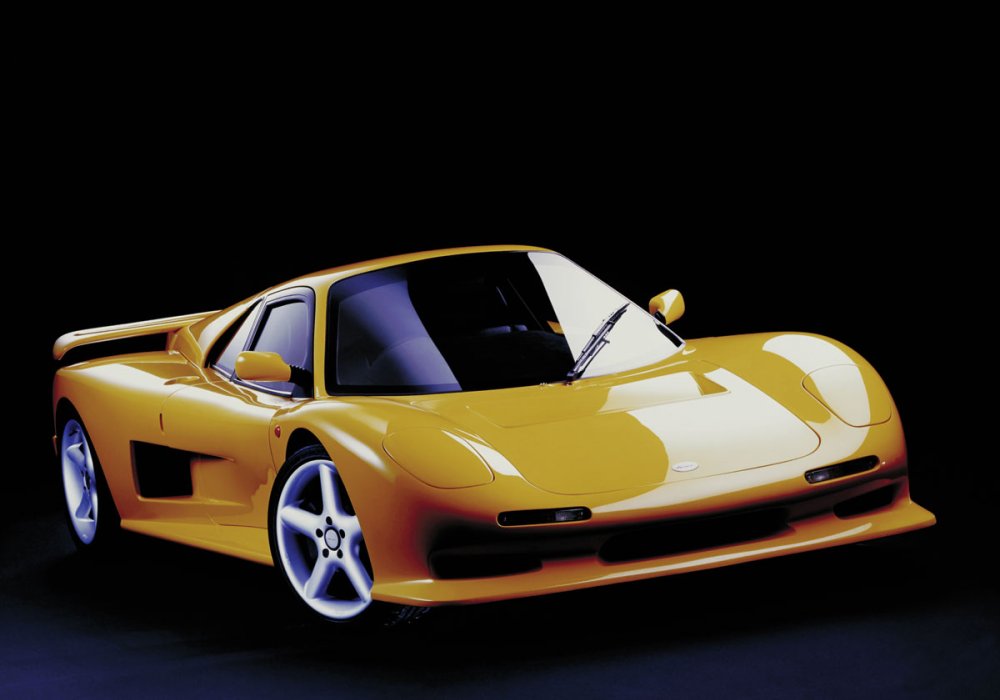The mid-1990s marked a pivotal moment in supercar history, as boutique manufacturers began challenging the established giants with innovative designs and race-derived technology. British engineering excellence found its bold new voice in the Ascari FGT, a supercar that dared to compete with Ferrari and Lamborghini on their own terms.
Lee Noble’s creation represented more than just another high-performance vehicle — it embodied the audacious spirit of independent British manufacturers who refused to accept the status quo. The FGT emerged as a testament to what determined innovators could achieve with limited resources but unlimited vision.
Birth of a Legend: Design and Development
The Ascari FGT’s journey began in 1993 in a modest British workshop, where Lee Noble and his team set out to create something extraordinary. Their approach combined traditional craftsmanship with cutting-edge materials, utilizing kevlar and fiberglass to achieve an impressive balance of strength and weight.
The car’s dimensions spoke to its purposeful design: 4,280mm long, 1,820mm wide, and a mere 1,120mm high. These proportions weren’t just about aesthetics — they represented careful aerodynamic optimization for both road and track performance.
Every panel and curve served a purpose, from the carefully sculpted air intakes to the distinctive rear diffuser. The road-going version’s 1,250kg weight demonstrated the team’s commitment to performance through lightweight construction.
Power and Performance: The Heart of FGT
At the FGT’s core lay a choice of powerful V8 engines that defined its character. The initial Chevrolet 6.0-liter V8 delivered around 350 horsepower, while later Ford V8 variants offered different power characteristics to suit various applications.
The mid-engine layout provided near-perfect weight distribution, contributing to the car’s impressive handling characteristics. Consider these performance metrics:
- 0-60 mph acceleration: 4.9 seconds;
- Top speed (standard FGT): 174 mph;
- Top speed (BRDC version): 205 mph;
- Power-to-weight ratio: 280 hp per tonne.
Fact!
The FGT's racing version shed 200kg from the road car's weight, achieving a remarkable 1,050kg that helped it dominate in British GT championships.
Performance figures tell only part of the story. The FGT’s real achievement lay in its ability to deliver these numbers while maintaining exceptional driveability and mechanical reliability.
Racing Legacy and Market Impact
The FGT’s racing pedigree became evident when it received certification for British GT championships. Dutch entrepreneur Klaas Zwart recognized the car’s potential, leading to his acquisition of Ascari Cars Ltd.
Historical Reference!
The sole surviving FGT-GT1 race car represents one of the rarest British racing cars of the 1990s, with documented competition history in various European championships.
The racing program proved instrumental in developing future Ascari models, establishing a foundation for the company’s later successes. Private teams achieved notable results, demonstrating the platform’s inherent competitiveness.
Track success translated into market recognition, though production numbers remained extremely limited. This exclusivity has only enhanced the FGT’s appeal among collectors and enthusiasts.
Collecting and Cultural Impact
Today, the Ascari FGT holds a special place in supercar history. Recent auction appearances, including a notable RM Sotheby’s London sale in 2021, have highlighted growing collector interest in these rare machines.
Survival rates for original FGTs remain extremely low, making each example increasingly valuable. The car’s influence extends beyond its immediate era, inspiring a new generation of boutique manufacturers.
Important!
Original documentation, including the rare 1995 factory brochure, has become highly sought after, with well-preserved examples achieving significant values at specialist automobilia auctions.
The FGT’s legacy lives on through various enthusiast communities and digital platforms, where its unique design and engineering continue to captivate new audiences.
The Road Ahead
The Ascari FGT’s story transcends mere performance statistics or production numbers. It represents a moment when British engineering dared to challenge conventional wisdom about what a supercar could be.
As we witness the evolution of performance cars in the electric era, the FGT’s innovative spirit and focus on lightweight construction remain remarkably relevant. Its approach to aerodynamics and chassis design continues to influence modern sports car development.
Pros and Cons
| Advantages | Disadvantages |
|---|---|
| Exceptional power-to-weight ratio with race-proven performance | Limited production numbers make parts availability challenging |
| Innovative kevlar and fiberglass construction techniques | Less prestigious brand name compared to established manufacturers |
| Proven racing pedigree with documented competition success | Original Chevrolet V8 less exotic than contemporary European engines |
| Excellent handling characteristics due to mid-engine layout | Limited dealer network and support infrastructure |
| Increasing collector value and historical significance | Documentation and service history often incomplete |
| Unique design that stands out from contemporary supercars | Restoration costs can be prohibitively expensive |
| Strong influence on future British sports car development | Limited technical support for maintenance and repairs |
The Ascari FGT remains one of the most intriguing chapters in British automotive history. While it may not have achieved the commercial success of its Italian rivals, its influence on automotive design and engineering continues to resonate. For collectors and enthusiasts, it represents a unique combination of innovation, performance, and exclusivity that few other 1990s supercars can match.

